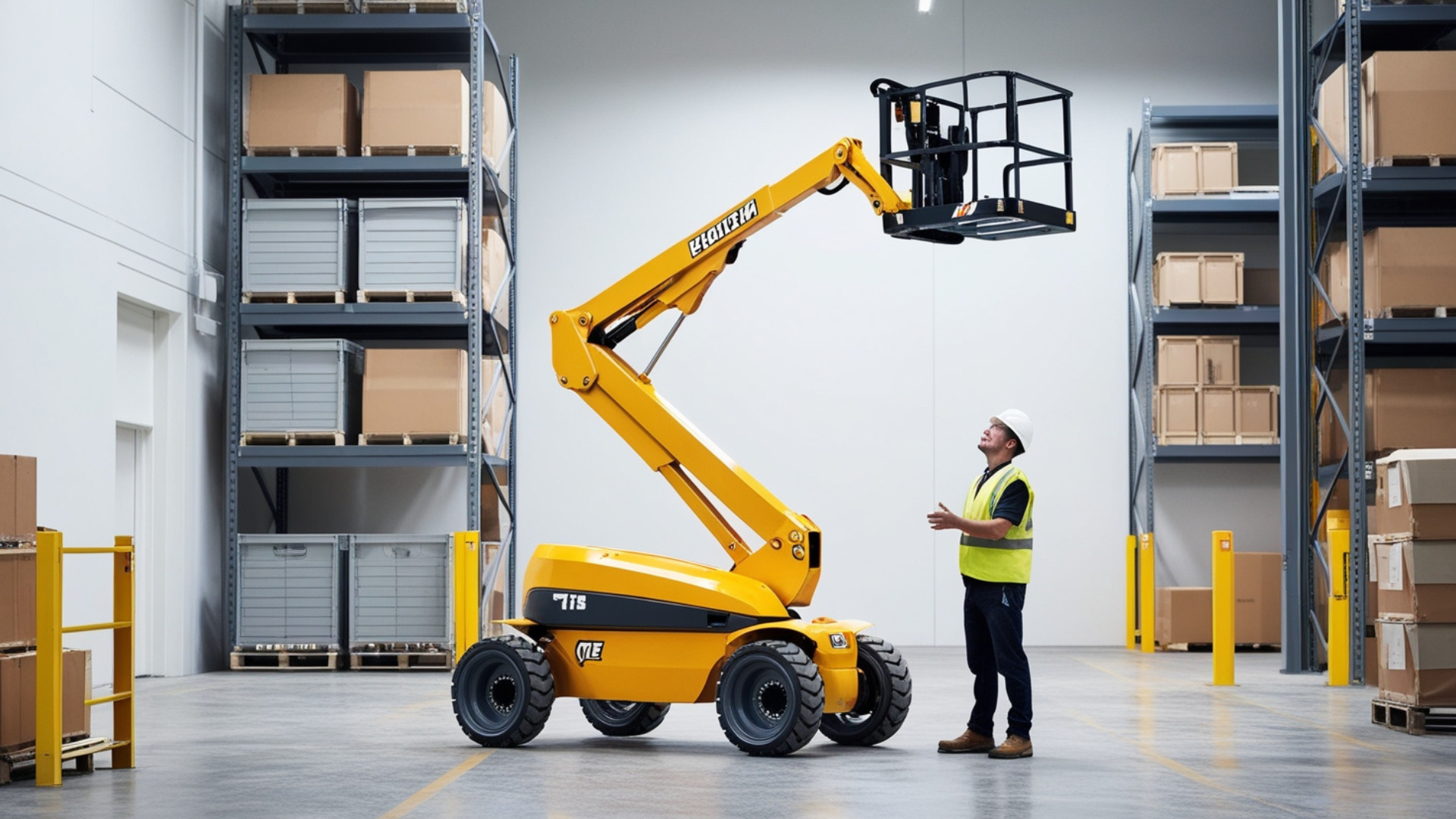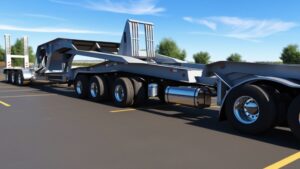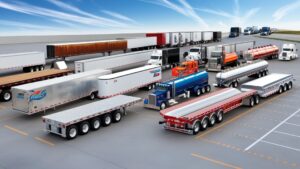Introduction
In the construction, maintenance, and industrial sectors, access to elevated workspaces is often necessary for various tasks, such as installation, inspection, and repair. An articulated boom lift, also known as an articulating boom lift, is a versatile and efficient machine designed to provide safe and reliable access to heights. Featuring a jointed arm that can bend and extend, these lifts allow operators to reach difficult areas and maneuver around obstacles. This article will delve into the characteristics, specifications, applications, advantages, and considerations when using articulated boom lifts.
What is an Articulated Boom Lift?
An articulated boom lift is a type of aerial work platform with a segmented arm that can bend at one or more points. This unique design enables the lift to navigate around obstacles while providing access to elevated areas that traditional straight boom lifts cannot reach. Articulated boom lifts are available in both electric and diesel-powered models, making them suitable for various indoor and outdoor applications.
Key Features of Articulated Boom Lifts
- Articulated Arm Design: The primary feature of an articulated boom lift is its segmented arm, which allows for flexibility in movement. The boom can extend, bend, and pivot, enabling operators to maneuver around obstacles, such as trees, buildings, and other structures.
- Height and Reach: Articulated boom lifts come in various sizes, with working heights typically ranging from 12 to 60 feet (approximately 4 to 18 meters) or more. Their horizontal reach can vary from 20 to over 30 feet (6 to 9 meters), depending on the model.
- Platform Capacity: Most articulated boom lifts have a platform capacity ranging from 500 to 1,000 pounds (227 to 454 kg), allowing operators to carry tools and materials to their work area.
- Rotating Platform: Many articulated boom lifts feature a rotating platform that allows for a 360-degree swivel, providing enhanced access and flexibility for operators to position themselves as needed.
- Stabilizers: Some models come equipped with stabilizers or outriggers that enhance stability when the lift is in operation, especially on uneven surfaces.
Common Specifications
Articulated boom lifts may have varying specifications depending on the manufacturer and model, but common specifications include:
- Working Height: Typically between 30 to 60 feet (9 to 18 meters).
- Platform Height: Ranges from 20 to 55 feet (6 to 17 meters).
- Horizontal Reach: Approximately 10 to 30 feet (3 to 9 meters).
- Platform Capacity: Usually between 500 to 1,000 pounds (227 to 454 kg).
- Weight: Ranges from 3,000 to 10,000 pounds (1,361 to 4,536 kg), depending on the model.
- Power Source: Diesel, electric, or hybrid options.
Applications of Articulated Boom Lifts
Articulated boom lifts are widely used in various industries and applications, including:
1. Construction
In construction, articulated boom lifts are essential for tasks such as framing, roofing, and installing electrical systems. Their ability to navigate around structures and reach elevated areas makes them invaluable for contractors.
2. Maintenance and Repair
Facility managers and maintenance crews utilize articulated boom lifts for tasks such as changing light bulbs, painting, and conducting inspections. The lifts allow easy access to hard-to-reach areas, such as building exteriors and overhead installations.
3. Industrial Applications
Manufacturing and industrial facilities use articulated boom lifts for maintenance and equipment servicing. Their reach capabilities enable workers to access machinery and overhead systems safely.
4. Event Setup
Event planners often use articulated boom lifts for setting up stages, lighting, and decorations. Their maneuverability and reach make them ideal for large venues and outdoor events.
5. Tree Care and Landscaping
In the landscaping industry, articulated boom lifts are used for tree trimming, pruning, and removal. Their ability to reach high branches while navigating around trees and structures is a significant advantage.
Advantages of Articulated Boom Lifts
Articulated boom lifts offer several advantages that make them a preferred choice for various applications:
1. Enhanced Reach and Flexibility
The articulated design allows operators to access difficult-to-reach areas that traditional straight boom lifts cannot. This flexibility enables workers to complete tasks in challenging environments more efficiently.
2. Increased Safety
Articulated boom lifts are designed with safety in mind. Many models come equipped with features such as guardrails, emergency stop buttons, and automatic leveling systems, which help ensure operator safety while working at heights.
3. Versatility
These lifts can be equipped with various attachments and platforms, allowing them to perform multiple tasks across different industries. This versatility makes them a valuable asset for contractors and facility managers.
4. Easy Maneuverability
Articulated boom lifts are designed for easy navigation around obstacles, making them ideal for tight spaces. Their compact design allows for easy transport and setup, reducing downtime.
5. Cost-Effective Solution
By providing a safe and efficient means of accessing elevated workspaces, articulated boom lifts help reduce labor costs and minimize the risk of accidents. This efficiency can lead to significant cost savings on projects.
Considerations When Using Articulated Boom Lifts
While articulated boom lifts offer numerous benefits, there are also considerations to keep in mind when using them:
1. Operator Training
Proper training is essential for operators to ensure safe and effective use of articulated boom lifts. Operators should be familiar with the lift’s controls, safety features, and operating procedures.
2. Site Assessment
Before using an articulated boom lift, a thorough site assessment is necessary to identify potential hazards, such as overhead power lines, uneven ground, or obstacles that could impede safe operation.
3. Weight Limits
Operators must adhere to the lift’s weight capacity to ensure safe operation. Overloading the platform can lead to accidents and equipment failure.
4. Weather Conditions
Operating articulated boom lifts in adverse weather conditions, such as high winds, rain, or snow, can pose safety risks. Operators should monitor weather conditions and refrain from using the lift during unsafe conditions.
5. Regular Maintenance
Regular maintenance is crucial for keeping articulated boom lifts in optimal working condition. Routine inspections and servicing help prevent breakdowns and ensure safety.
Conclusion
Articulated boom lifts are indispensable tools for accessing elevated workspaces in construction, maintenance, landscaping, and various industrial applications. Their unique design offers enhanced reach, flexibility, and safety, making them a preferred choice for operators and contractors alike.
With proper training, site assessment, and adherence to safety guidelines, articulated boom lifts can significantly improve productivity and efficiency in various tasks. As industries continue to evolve, the demand for versatile and reliable access solutions like articulated boom lifts will undoubtedly grow, making them a valuable investment for businesses across multiple sectors. Whether for construction, maintenance, or event setup, the articulated boom lift proves to be a robust solution for reaching new heights.





